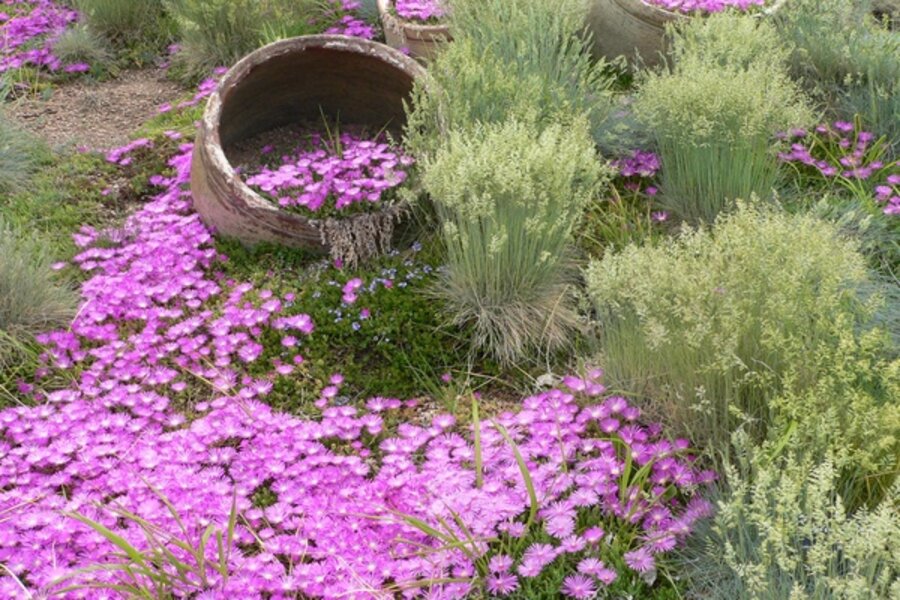Hardy ice plants produce a vivid display in Western gardens
Loading...
Twenty years ago, most Coloradoans were growing traditional water-loving English garden plants because that’s what nurseries carried and gardening books featured.
But persevering xeriscape pioneers and a number of regional plant people, especially Panayoti Kelaidis of Denver Botanic Gardens and David Salman of High Country Gardens in Santa Fe, N.M., have sought out, introduced, and helped popularize numerous beautiful plants for Western gardens.
The palette of currently available ornamental plants that thrive in our high, dry Western conditions is enormously varied. This isn’t too surprising considering that steppe regions have the greatest plant diversity of any geographic areas worldwide, though all are severely degraded from overgrazing and human development today.
Long-lasting show-stoppers
Stunning hardy ice plants (Delosperma), from which Mr. Kelaidis first collected seed during his plant explorations in the Drakensberg Mountains of South Africa in the late 1990s, have become signature plants here, lighting up gardens throughout the West. [See both photos at top; to access the second photo, click on the arrow at the right base of the first one.]
They sparkle, shine, shimmer, and tumble over rocks, spreading to create vivid starry tapestries. All stay low, just two to four inches high, and never become thugs in the garden. They look especially fabulous with grasses.
Hardy ice plants are covered with daisylike flowers for a month or two, or more, depending on the variety. D. floribundum blooms throughout the growing season.
Colors are Technicolor brilliant – purple, magenta, fuschia, bright yellow – as well as a subtler light lavender (D. ‘Psfave’ or Lavender Ice) and salmon pink (D. ‘kelaidis’).
They have an almost metallic sheen. Some have dark or light eyes and fade to a different hue producing a combination of shades.
They like our semiarid climate with hot summers, cold, dry winters, and low rainfall and humidity, but most will grow elsewhere, too, as long as annual rainfall isn’t over 30 inches per year and winters are on the dry side. All are hardy to Zone 5, and many to Zone 4.
Once established, they require moderate watering to xeric conditions and most will tolerate short periods of drought very well.
D. ashtonii ‘Blut’ was discovered by Arvada nurseryman Kelly Grummons growing in his gravel driveway at Timberline Gardens. Grow it hot and dry to intensify the magenta-red flowers. The yellow D. nubiginum is less heat tolerant and better at higher elevations.
Delosperma are adaptable to many different soil types except wet, and they appreciate good drainage. Each plant spreads to become a 10-to-24-inch-wide clump or mat, (depending on the variety), and blooms floriferously.
Living mulch
Because their roots are shallow, hardy ice plants act as a living mulch, cooling the roots of surrounding plants without competing for water and nutrients. They like a sunny exposure, although some will grow in partial shade.
These long-blooming, succulent ground covers are more delicate and refined in appearance and much less aggressive in their growth than the non-hardy species (also from South Africa originally) that have escaped cultivation and naturalized in California and other Mediterranean climates. Grow several types together for a striking display that will also attract bees and butterflies.
-----
Jane Shellenberger lives on five acres at 5,000 feet on the plains in Hygiene, Colo., between Boulder and Longmont. She is the publisher and editor of Colorado Gardener, "a thinking gardener's companion." Her book, "Organic Gardener's Companion: Growing Vegetables in the West" will be available in spring 2012. To read more by Jane here at Diggin' It, click here.






